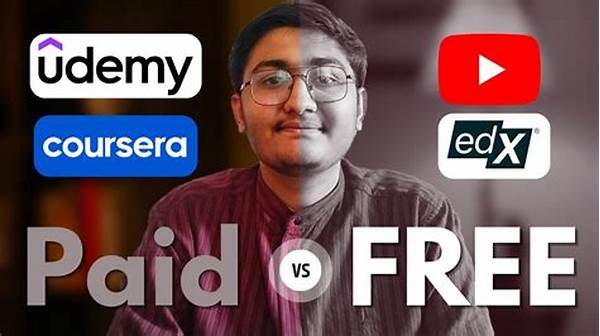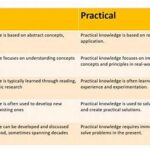How YouTube Competes with Paid Online Courses
In the bustling digital economy, the concept of learning has dramatically transformed, evolving along with technology and society’s needs. Traditional classrooms are no longer the solitary hub of knowledge transmission. Instead, digital platforms like YouTube have emerged as powerful competitors to paid online courses. YouTube’s massive database of how-to guides and educational content provides a unique selling proposition that captivates learners worldwide. The allure of YouTube is not merely its cost-free access but its engaging format, which seamlessly blends entertainment with education. Why pay a fee when knowledge is just a click away?
Read More : Best Online Courses For Working Professionals
At first glance, the phrase “how YouTube competes with paid online courses” may sound like an underdog story—a tale of David versus Goliath. But as we dive deeper into the dynamics of online education, YouTube’s strength is evident. The platform’s ability to capture attention, spark interest, and maintain engagement makes it a formidable contender. Armed with persuasive content, influencers, and experts sharing firsthand experiences, YouTube represents a blend of testimonials and creative narratives. For those scrolling through videos in their pyjamas, YouTube feels like education wrapped in comfort.
YouTube’s Educational Landscape
The secret sauce in YouTube’s appeal lies in its unique features: accessibility, diverse content, and a sense of community. With millions of free instructional videos from creators ranging from tech gurus to culinary maestros, YouTube democratizes knowledge at an unprecedented scale. This vast array of choices means that users are more likely to find a learning style and pacing that suits them—a powerful draw compared to the often one-size-fits-all approach of paid online courses.
An In-Depth Look at How YouTube Competes with Paid Courses
A User-Friendly Platform
YouTube’s interface scores high on user-friendliness, reducing learning barriers and making it a top choice for those hesitant about other platforms. Users enjoy the freedom to pause, rewind, or explore additional content based on their interests. Access to real-time comments and feedback provides a multifaceted, interactive learning experience that encourages deeper understanding.
From a marketing perspective, YouTube capitalizes on its community-driven culture, creating a personal connection deeper than any advertisement or polished course sales page. This approach not only builds trust but ignites a desire to consume more content. Users find themselves in a cycle of learning and entertainment, making it a continuous relationship rather than a transactional interaction.
Comparing Costs: Free vs. Paid
The stark cost contrast between YouTube and paid courses cannot be understated. While enrolling in a structured online course demands a financial commitment, YouTube’s free resources attract those who prefer flexibility over structure. With YouTube, learners can experiment without the risk of financial loss, making it especially appealing to novices who are still navigating their interests.
The Power of Analytics and Algorithms
YouTube’s powerful algorithms tailor content recommendations to individual needs, providing a user-specific learning journey that paid courses often lack. This functionality means users are consistently engaged with content that aligns with their goals and interests, fostering a productive learning environment.
YouTube’s competitive edge heavily relies on the platform’s analytics, offering creators insights to refine their content based on viewer engagement. This data-driven approach ensures that content remains relevant, compelling, and effective—traits highly attractive in the ever-evolving educational sector.
Seven Goals for How YouTube Competes with Paid Online Courses
The Balance of Professionalism and Relatability
In the digital learning sphere, YouTube skillfully balances professionalism with relatability. Paid courses may boast polished, comprehensive content, but YouTube captivates with its raw, authentic presentations. This charisma is not merely a side effect—it’s a cornerstone of how YouTube competes with paid online courses. Snappy edits, creative intros, and casual attire are not just image choices but an illustrative bridge connecting educators and the audience in an informal yet satisfying journey of knowledge transfer.
YouTube’s appeal isn’t just for individual learners but also appeals to professionals looking to enhance or shift their careers. Whether through a storyteller’s vibrant narrative or an educator’s clear, concise explainer video, users find gems of wisdom presented with both passion and practicality.
Monetization and Creator Incentives
YouTube incentivizes its creators, encouraging continued content production by offering monetization options. This derivative ecosystem means that the platform not only competes by offering free content but sustains its frontend with robust backend support. Creators relish the flexibility and reach that YouTube offers, which is often less constrained than structured online courses. Monetization options ensure a continuous flow of fresh, motivated content without directly charging the end user.
It’s an ingenious strategy that aligns creators’ aspirations with users’ needs, effectively utilizing competitive edges of adaptability and innovation. This synergy has catalyzed a vibrant community of creators who have excelled in providing quality educational content, contributing to YouTube’s undeniable relevance in the online educational sector.
Tips on How YouTube Competes with Paid Online Courses
Creating an Impact: YouTube’s Role in Education
In conclusion, YouTube persists as a formidable force against paid online courses through its unique blend of accessibility, diversity, and interactive learning spaces. Its free resources and a commitment to fostering community illustrate a paradigm shift in education, overcoming traditional limitations. By leveraging advanced technology and emphasizing community engagement, YouTube continues to redefine learning boundaries, proving that knowledge is accessible, versatile, and often, delightfully entertaining.


